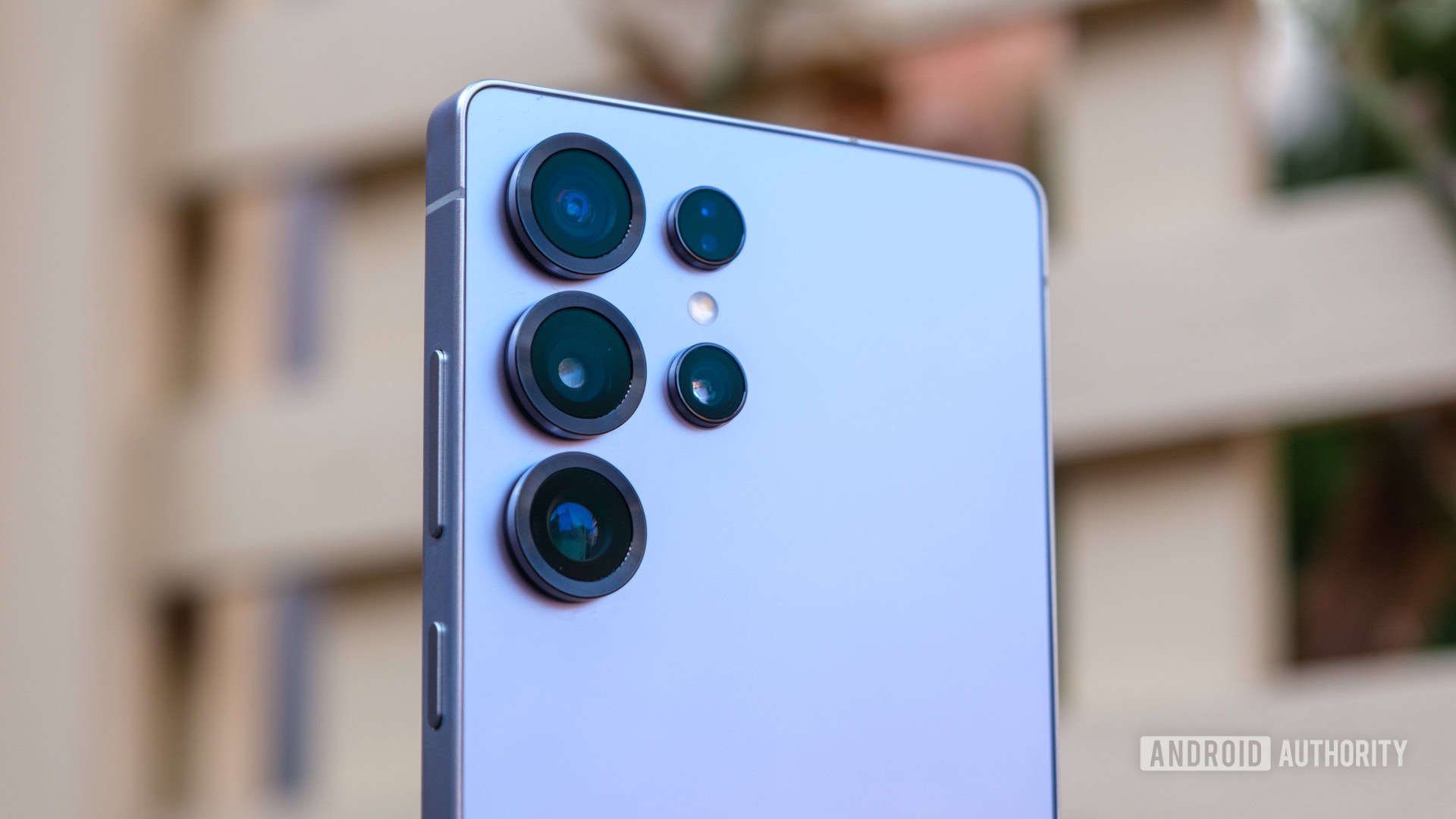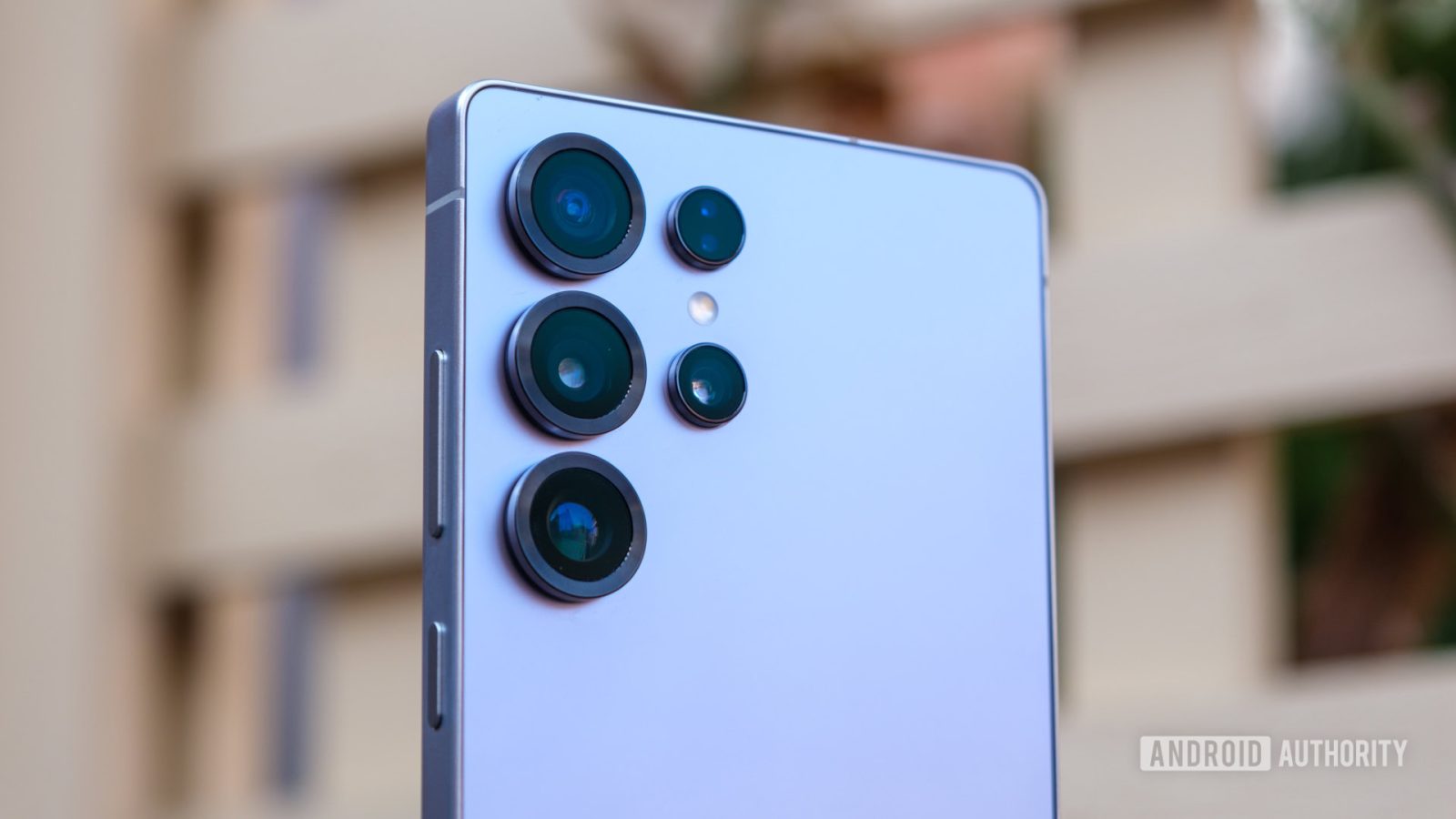
Ryan Haines / Android Authority
Although Samsung’s flagship smartphones take great pictures, they’ve not been without issues in recent years. Shutter lag probably tops the charts of recent user annoyances; a slight delay between pressing the shutter and the picture capturing can make it hard to capture fast-moving subjects. Samsung has seemingly reduced the shutter lag issue with the Galaxy S25 Ultra, but in my experience, the problem still pops up on occasion — usually when you really wish it wouldn’t.
I didn’t need to retest like we did for the Galaxy S24 Ultra’s shutter lag to know it’s still there; I’ve been chasing two toddlers around with the Galaxy S25 Ultra for a few weeks and ended up with multiple blurry pictures. Pictures that I certainly feel would have turned out a lot better on some of the other brilliant camera phones I’ve tested so far this year. While certainly not noticeable in every picture, as soon as you’re trying to capture the action, it feels like you need to be able to see a split second ahead to keep everything in-frame. If you’re not fast enough, you risk your subject ending up at the edge of the frame, a blurry mess, or sometimes both. Not that either picture below is terrible, but hopefully, they illustrate the framing problems I’ve been having with Samsung’s latest Ultra flagship.
Now, shutter lag comes in two parts: the lag you can really feel is the delay between the button press and the actual photo showing up in the gallery. This can be caused by sluggish autofocusing, memory latency, or chip communication delays. Either way, it’s perhaps the most annoying and challenging to combat because it messes up your framing. Even though you swear you lined up your pets, kids, or anything speedily passing by in the middle of the frame, the end result is off-center or even out of frame.
The other part of shutter lagisn’t always so obvious and often looks a lot like an overly long shutter speed, but a delay in the time it takes actually to capture the image is usually what produces a blurry-looking result. This can result from an overly long shutter speed, but equally, the time taken between multiple frames used for HDR and computational photography has an impact, too. So even if the shutter speed is quite fast, too many frames taken too far apart to construct an HDR image can still produce blurring and artifacts. Combined, you’ve got all the makings of photos that come out way worse than you envisioned.
Galaxy S25 Ultra shutter lag may be improved, but it still shows up when it’s least welcome.
Knowing exactly what’s a phone-specific issue or something that applies to other handsets is tricky. To see if this shutter lag I’ve been feeling is exclusively a Galaxy S25 Ultra problem, I grabbed the Pixel 9 Pro XL, Find X8 Pro, and Xiaomi 15 Ultra. Of course, capturing action shots side-by-side from four phones would be pretty difficult without two extra arms. Instead, I concocted a simple game to test them: photographing a car whizzing down a simple kids’ toy. My rules were simple: just three chances to try and get the car in the middle of the frame. Here’s how it went.
My reflexes might not be super quick these days, but the three test phones all shared a very similar theme: I sometimes felt like I was pressing the shutter slightly too soon. Despite eyeballing the car in the middle of the frame, my first snaps actually ended up being taken a bit too early on all these phones. You might think I was preempting the lag, and while that might be part of it, most phones are built to compensate for shutter delay by “shooting ahead.” In fact, the OPPO Find X8 Pro gallery preview shows the post-processing reverting to an earlier, sharper frame than the one obtained at the shutter tap. Preemptively taking photos before the shutter press is sometimes called zero-shutter lag, where the phone constantly takes pictures even before you press the shutter. It’s the key to keeping these phones feeling responsive during action shots. Google even uses this technique to let you return and pick your preferred shot after it’s been taken.
By comparison, the Galaxy S25 Ultra was the only phone where I repeatedly missed the subject. If I waited until the car was in the middle of the frame, it would always be gone by the time the photo was actually captured. Eventually, I managed to grab one in the center, but only by anticipating the lag rather than the phone capturing it as I pressed. Of course, you don’t get three chances to capture the action in real life, which explains exactly why I’ve been feeling so let down by the S25 Ultra in the real world.
The photo results above showcase the other half of shutter lag: how long it takes to capture and process the image once the button is actually pressed. We can see a small amount of motion blur on the Find X8 Pro and a bit more on the Xiaomi 15 Ultra, while the Pixel 9 Pro is pretty blur-free, though this comes at the expense of slightly higher ISO and noise. For whatever reason, be it a longer shutter speed or slow multi-frame processing, the Samsung Galaxy S25 Ultra takes a far blurrier picture than its rivals. While the other phones show only minor blur, it’s virtually impossible to distinguish that this is even a toy car in the Galaxy S25 Ultra snap.
Given that most users will shoot with auto-settings most of the time, they’ll see this sort of problem crop up time and again compared to rival handsets. Case closed: I definitely wasn’t imagining it when I felt the Samsung flagship took too many blurry or delayed pictures compared to other camera-oriented flagships I’ve tested this year.
How to fix Samsung Galaxy S25 Ultra shutter lag
Ryan Haines / Android Authority
There are a few ways to combat the dreaded Galaxy shutter lag. The first is to shoot using the Pro mode or Expert RAW to manually reduce the shutter speed and/or increase the ISO levels to reduce the likelihood of motion blur and help ensure sharpness for moving subjects. This is good photography practice for action shots anyway, but it is hardly ideal when you just want to break out a quick snap. Unfortunately, it doesn’t seem to help reduce the actual shutter delay.
A popular option is to use the Good Lock module called Camera Assistant and enable the Quick tap shutter option. This claims to speed up capture by taking the picture as soon as you press the shutter button, which you’d think would be the default behavior anyway. Thankfully, this seems to help with the capture time, making the phone feel more like the zero-shutter lag rivals I tested here. If anything, you have to shake off the pre-emptive muscle memory you develop shooting with a Galaxy or you’ll end up taking action shots a little too soon, so it clearly works. However, this doesn’t resolve the motion blur issue, and this feature doesn’t seem to work reliably (if at all) for photos captured in Pro mode or Expert RAW, which continue to feel delayed, so you can’t use it in combination with a manually reduced shutter speed.
Samsung’s burst mode is the best hedge to capture action shots.
Perhaps the most foolproof idea is to use the burst mode built into the default camera app. This option isn’t immediately obvious, but you can take a massive number of burst photos by swiping down and holding the on-screen shutter button for as long as you need. There’s still an initial shutter delay, but you can start shooting slightly ahead of time and still be safe knowing that you’ll end up with a result that’s in—or close to—the center of the frame. The trick is just to remember that this feature is there when you’re in the heat of the moment, and then have the patience to sort through the burst photos to find the best one afterward.
See price at Amazon
Xiaomi 15 Ultra
Brilliant cameras
Two-day battery life
Fast universal charging
See price at Amazon
Google Pixel 9 Pro XL
The best specs in the Pixel 9 series
Gorgeous display
Seven years of software updates

Leave a Reply